目录
7.5使用深度遍历算法遍历json的所有节点值(前面在链表中我们也遍历过json,但是比较low)
前言:很多前端问为什么我们前端也要学算法呢?我们听说过 程序=数据结构+算法,学好数据结构与算法,不仅是面试的需要,也是提高我们逻辑思维能力,提高我们应用性能,提高职业天花板的一个关键。所以结合网上的视频,总结了如下笔记,希望会对大家有帮助。
1.数据结构与算法的关系?
数据结构:计算机存储,组织数据的方式。就像锅碗瓢盆,不同的食物用不同的容器去剩。
算法:一系列解决问题的清晰指令。就像食谱一样。
程序=数据结构+算法,数据结构为算法提供服务,算法围绕数据结构操
总结:算法指令里面难免有各种数据,所以没有数据结构我们如何存储这些数据呢,所以才有了上面的这句话。锅碗瓢盆用来存放各种食物,然后食谱拿着锅碗瓢盆去做出美味佳肴。
1.1.时间复杂度
一个特殊的函数,以O来表示,如O(1),O(n),O(log n)O(n2)
算法的时间复杂度是定型描述该算法的运行时间。要注意定性的意思是不会描述该程序运行了多少秒,而是描述该程序大概的运行时间的一个趋势。
1.2.空间复杂度
也是一个特殊的函数,也是以O来表示,如O(1),O(n),O(log n)O(n2)
算法的空间复杂度是算法正在运行过程中临时占用存储空间大小的量度。(是指的开辟的临时变量所需的空间,而不是输入输出所占的空间)
2.栈
- 先进后出
2.1js中如何用栈
在js中我们没有栈这种数据结构,但是我们可以用Array来实现,用Array的push和pop实现压栈和出栈。(所有的递归都可以用栈来实现。)
下面是leetcode里的144题

var preorderTraversal = function (root) {
const res=[]
if (root) {
res.push(root.val)
if (root.left) res.push(...preorderTraversal(root.left))
if (root.right) res.push(...preorderTraversal(root.right))
}
return res
};2.2栈的应用场景
我们要知道什么时候用栈,这才是最重要的,所有后进先出的场景,我们都可以用栈来解决问题。
- 十进制转二进制
用十进制的数不断的除二取余数,然后倒过来就好了,我们就可以得到二进制了。
- 有效的括号
越靠后的左括号,对应的右括号越靠前,遇到左括号入栈,遇到右括号出栈,最后栈空了,就说明这个字符串合法。
下面是leetcode里的20题

var isValid = function (s) {
const res = []
for (let i = 0; i < s.length; i++) {
if (s[i] === "(" || s[i] === "{" || s[i] === "[") {
res.push(s[i])
}else if(s[i]==="}"){
if(res.pop()!=="{") return false
} else if(s[i]===")"){
if(res.pop()!=="(") return false
} else{
if(res.pop()!=="[") return false
}
}
if (res.length === 0) {
return true
} else {
return false
}
};- 函数调用堆栈
最后调用的函数是最先调用完的,js解释器是使用栈来控制函数的调用。
在vscode是支持node的调试的,我们下载一个如下插件

然后就可以打断点,然后再点击运行下面的调试就可以看到我们的callback调用栈了。
?3.队列
- 先进先出
3.1js中如何用队列
在js中我们没有栈这种数据结构,但是我们可以用Array来实现,用Array的shift和push实现压栈和出栈。(所有的递归都可以用栈来实现。)
3.2队列的应用场景
我们要知道什么时候用队列,这才是最重要的,所有先进先出的场景,我们都可以用栈来解决问题。
- 食堂排队打饭
- JS异步中的任务队列
js是单线程,无法同时处理异步中的并发任务。在页面同时并发多个异步请求,也完成了,然后js该执行哪个回调函数里的?逻辑呢,如果不引入任务队列这样的数据结构,那么这个问题就处理不了
- 计算最近请求次数
如下例,当前时刻算,3000ms内发出的请求次数
inputs=[[],[1],[100],[3001],[3002]]
输出[null,1,2,3,4]
下面是leetcode里的933题
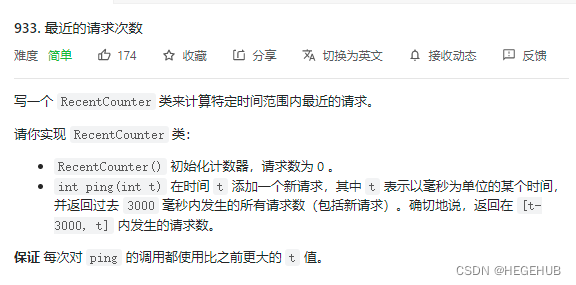
var RecentCounter = function() {
this.q=[]
};
/**
* @param {number} t
* @return {number}
*/
RecentCounter.prototype.ping = function(t) {
this.q.push(t)
while(this.q[0]<t-3000){
this.q.shift()
}
return this.q.length
};
/**
* Your RecentCounter object will be instantiated and called as such:
* var obj = new RecentCounter()
* var param_1 = obj.ping(t)
*/3.3事件循环和任务队列
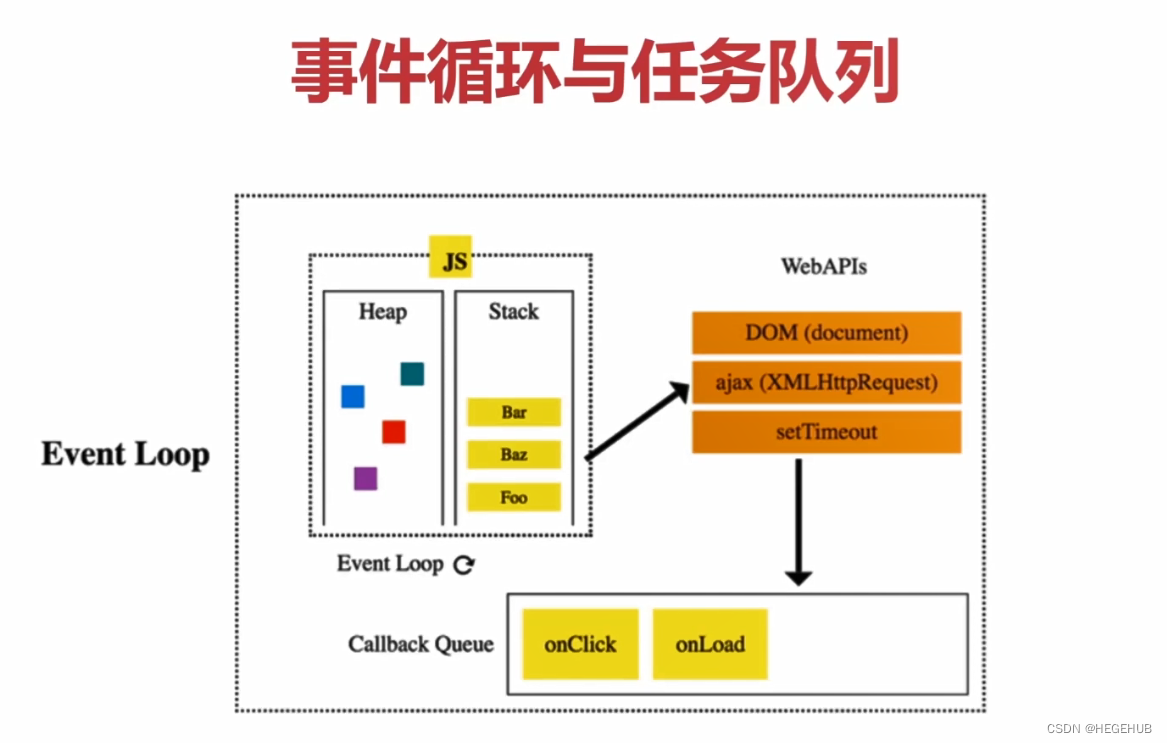
事件循环:一段js代码刚执行的时候会有一个匿名的主事件会被放在任务队列里面,js引擎会去任务队列里面取一个事件来执行,因为js引擎是单线程的所以js引擎只能处理一个事件,在执行这个事件的过程中,如果有异步任务的时候,js引擎就把任务交给外部的API去执行,然后js引擎就不管了,外部API执行异步任务结束的时候,会将回调函数放入任务队列里面,然后任务队列前面的事件执行完了,那么这个新放入的回调函数就会放入js引擎里面执行,如果新放入的回调函数里面还有异步任务,那么就继续执行做这个循环。
setTimeout(()=>console.log(0),0)
console.log(1)打印顺序1和0
4.链表
- 多个元素组成的列表
- 元素存储不连续,用next指针连在一起
- 链表增删非首尾元素的时候比数组方便,不需要大量移动元素
4.1js中如何用链表
在js中我们没有链表这种数据结构,但是我们可以用Object来实现这种数据结构。可以对用Object来实现链表的增删以及遍历。
//创建链表
const a={val:"a"}
const b={val:"b"}
const c={val:"c"}
const d={val:"d"}
a.next=b
b.next=c
c.next=d
// 遍历列表
let p=a
while(p){
console.log(p.val)
p=p.next
}
// 插入节点在c节点的后面
const e={val:'e'}
c.next=e
e.next=d
// 删除e节点
c.next=d下面是leetcode里的237题

var deleteNode = function(node) {
node.val=node.next.val
node.next=node.next.next
};下面是leetcode里的206题
![]()
var reverseList = function (head) {
let p1 = null
let p2 = head
while (p2) {
temp = p2.next
p2.next = p1
p1=p2
p2 = temp
}
return p1
};下面是leetcode里的2题

var addTwoNumbers = function(l1, l2) {
const l3=new ListNode(0)
let p3=l3
let p2=l2
let p1=l1
let carry=0
while(p1||p2){
const v1=p1?p1.val:0
const v2=p2?p2.val:0
const val=v1+v2+carry
carry=Math.floor(val/10)
p3.next=new ListNode(val%10)
if(p1) p1=p1.next
if(p2) p2=p2.next
p3=p3.next
}
if(carry){
p3.next=new ListNode(carry)
}
return l3.next
};下面是leetcode里的83题

var deleteDuplicates = function (head) {
let p1 = head
while (p1 && p1.next) {
if (p1.val === p1.next.val) {
p1.next = p1.next.next
} else {
p1 = p1.next
}
}
return head
};下面是leetcode里的141题

var hasCycle = function (head) {
let p1 = head
let p2 = head
while (p1 && p2 && p2.next) {
p1 = p1.next
p2 = p2.next.next
if (p1 === p2) {
return true
}
}
return false
};?4.2js中的原型链和链表
- 其实js中的原型链的本质就是一个链表
- 原型链上的节点是各种原型对象,Function.prototype,Object.prototype
- 原型链通过__proto__属性连接各种原型对象
obj->Object.prototype->null
func->Function.prototype->Object.prototype->null
array->Array.prototype->Object.prototype->null
- 如果A沿着原型链能找到B.prototype,那么A?instanceof?B为true。
- 相当于func即是Function的实例,也是Object的实例
- 相当于array即是Array的实例,也是Object的实例
- 如果在A对象上没有找到x属性,那么会沿着原型链找x属性。
面试题:简述instanceof的原理,并用代码实现
解法:遍历A的原型链,如果找到B.prototype,返回true,否则返回false
let obj={}
const instanceOf=(A,B)=>{
let p1=A
while(p1){
p1=p1.__proto__
if(p1===B.prototype){
return true
}
}
return false
}
console.log(instanceOf(obj,Object))//true?4.3js中使用链表指针获取JSON的节点值
const json = {
a: { b: { c: 1 } },
d: { e: 1 }
}
const path = ["a", "b", "c"]
let p2 = json
path.forEach(k => {
p2 = p2[k]
})5.集合
一种无序且唯一的数据结构。
栈是先进后出,队列先进先出,链表可以用next访问,所以是有序的。
而且栈队列链表的值不是唯一的,而集合的值是唯一的
5.1js中如何用集合
在js中我们有集合,名为Set
5.2集合的应用场景
集合的常用操作,去重,判断某元素是否在集合中,求交集等等
// 数组去重
let arr=[1,2,3,4,2,4]
const arr1=[...new Set(arr)]
console.log(arr1)
// 判断元素是否在集合中
const set=new Set([2,4,6])
console.log(set.has(2))//true
// 求交集
const set1=new Set([2,6,1,8])
const set2=new Set([...set].filter(item=>set1.has(item)))
console.log(set2)下面是leetcode里的349题

var intersection = function(nums1, nums2) {
return [...new Set(nums1)].filter(item=>nums2.includes(item))
};
5.3前端与集合
Set操作
使用Set对象:new,add,delete,has,size
迭代Set对象:多种迭代方法,Set与Array互换,求交集/差集
let mySet=new Set()
mySet.add(2)
mySet.add(3)
mySet.add(2)//没用,添加重复的值
mySet.add('2')
mySet.add({name:"ct"})
mySet.add({name:"ct"})//两个对象看起来一样,但是内存地址值不一样
console.log(mySet.has(2))//true
console.log(mySet.has('2'))//true
mySet.delete('2')
console.log(mySet)
console.log(mySet.size)//4
// 迭代Set对象
// for of
for (const item of mySet) {
console.log(item)
}
for (const item of mySet.keys()) {
console.log(item)
}
for (const item of mySet.values()) {
console.log(item)
}
// Set这个结构的key和value是一样的
for (const [key,value] of mySet.entries()) {
console.log(key,value)
}
// Set转为Array
const myArr=Array.from(mySet)
const myArr1=[...mySet]
console.log(myArr,myArr1)
// Array转为Set
const mySet2=new Set([1,2,3])
console.log(mySet2,mySet)
// 求Set的交集和差集
const intersection=new Set([...mySet].filter(x=>mySet2.has(x)))
console.log(intersection)
const difference=new Set([...mySet].filter(x=>!mySet2.has(x)))
console.log(difference)6.字典
与集合类似,字典也是一种存储唯一值的数据结构,但是它是以键值对的形式来存储的。
6.1js中如何用字典
在js中我们有字典,名为Map
字典的常用操作:键值对的增删改查
6.2js中字典的增删改查
const m=new Map()
// 增
m.set('a',"aaa")
m.set('b',"bbb")
console.log(m)
// 删
m.delete("a")
console.log(m)
// 改
m.set('b',"bbwwaa")
console.log(m)
// 查
console.log(m.get("b"))
// 删,这个删是把所有的都删完
m.clear()
console.log(m)下面是leetcode里的349题(前面的解法是用Set做的)

var intersection = function(nums1, nums2) {
const map=new Map()
nums1.forEach(n=>{
map.set(n,true)
})
const res=[]
nums2.forEach(n=>{
if(map.get(n)){
res.push(n)
map.delete(n)
}
})
return res
};下面是leetcode里的20题(前面的解法使用栈来做的)

var isValid = function (s) {
const res = []
const map = new Map()
map.set("{", "}")
map.set("(", ")")
map.set("[", "]")
for (let i = 0; i < s.length; i++) {
const c = s[i]
if (map.has(c)) {
res.push(c)
} else {
const t = res[res.length - 1]
if (map.get(t) === c) {
res.pop()
} else {
return false
}
}
}
return res.length === 0
};下面是leetcode里的1题

var twoSum = function (nums, target) {
const map = new Map()
for (let i = 0; i < nums.length; i++) {
const n = nums[i]
const n2 = target - n
if(map.has(n2)){
return [map.get(n2),i]
}else{
map.set(n,i)
}
}
};下面是leetcode里的3题

var lengthOfLongestSubstring = function (s) {
let l = 0
let res = 0
const map = new Map()
for (let r = 0; r < s.length; r++) {
if(map.has(s[r])&&map.get(s[r])>=l){
l=map.get(s[r])+1
}
res = Math.max(res, r - l + 1)
map.set(s[r],r)
}
return res
};下面是leetcode里的76题(困难)?
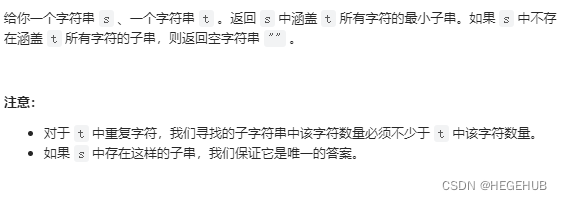
var minWindow = function(s, t) {
// 找出所有包含t的子串,返回长度最小的子串
let l=0
let r=0
const need=new Map()
for(let c of t){
need.set(c,need.has(c)?need.get(c)+1:1)
}
let needType=need.size
let res=""
while(r<s.length){
const c=s[r]
if(need.has(c)){
need.set(c,need.get(c)-1)
if(need.get(c)===0) needType-=1
}
while(needType===0){
const newRes=s.substring(l,r+1)
if(!res||newRes.length<res.length) res=newRes
const c2=s[l]
if(need.has(c2)){
need.set(c2,need.get(c2)+1)
if(need.get(c2)===1) needType+=1
}
l+=1
}
r++
}
return res
};7.树
一种分层数据的抽象模型
7.1js中如何用树
在js中我们没有树,但是可以用Object和Array构建树
前端工作中常见的树包括:DOM树,级联选择,树形控件?
{
value:"123",
label:"nihao",
children:[
{
value:"123",
label:"nihao",
children:[]
}
]
}7.2什么是树的深度/广度优先遍历
深度优先遍历:尽可能深的搜索树的分支。相当于正常的看书,看完一章和一章的内容再看下一章。
- 先访问根节点
- 对根节点的children挨个进行深度优先遍历
广度优先遍历:先访问离根节点最近的节点。相当于先看目录,然后再看目录下面的具体内容。
- 新建一个队列,把根节点入队。
- 把队头出队并访问。
- 把对头的children挨个入队。
- 重复第二三步,直到队列为空。
const tree = {
val: "a",
children: [
{
val: "b",
children: [
{
val: "d",
children: []
},
{
val: "e",
children: []
},
]
},
{
val: "c",
children: [
{
val: "f",
children: []
}, {
val: "g",
children: []
},
]
},
]
}
// 深度优先遍历
const dfs=(root)=>{
console.log(root.val)
root.children.forEach(child => {
dfs(child)
});
}
dfs(tree)
// 广度优先遍历
const bfs=(root)=>{
const q=[root]
while(q.length>0){
const n=q.shift()
console.log(n.val)
n.children.forEach(child=>{
q.push(child)
})
}
}
bfs(tree)7.3二叉树的先/中/后序遍历(递归版)
先中后的顺序是针对根节点的访问顺序的,中序遍历和后序遍历就调整一下访问根节点的顺序就可以了。
下面以先序遍历为例子。
- 访问根节点
- 对根节点的左子树进行先序遍历
- 对根节点的右子树进行先序遍历
const bt = {
val: 1,
left: {
val: 2,
left: {
val: 4,
left: null,
right: null
},
right: {
val: 5,
left: null,
right: null
}
},
right: {
val: 3,
left: {
val: 6,
left: null,
right: null
},
right: {
val: 7,
left: null,
right: null
},
}
}
const preorder=(root)=>{
if(!root) return
console.log(root.val)
preorder(root.left)
preorder(root.right)
}
preorder(bt)
const inorder=(root)=>{
if(!root) return
inorder(root.left)
console.log(root.val)
inorder(root.right)
}
inorder(bt)
const postorder=(root)=>{
if(!root) return
postorder(root.left)
postorder(root.right)
console.log(root.val)
}
postorder(bt)7.4二叉树的先/中/后序遍历(非递归版)
栈就是我们去实现非递归版的一个核心,所有的递归都可以用栈来解决。
const bt = {
val: 1,
left: {
val: 2,
left: {
val: 4,
left: null,
right: null
},
right: {
val: 5,
left: null,
right: null
}
},
right: {
val: 3,
left: {
val: 6,
left: null,
right: null
},
right: {
val: 7,
left: null,
right: null
},
}
}
// 前序遍历非递归版
const preorder=(root)=>{
if(!root) return
const stack=[root]
while(stack.length){
const n=stack.pop()
console.log(n.val)
if(n.right) stack.push(n.right)
if(n.left) stack.push(n.left)
}
}
preorder(bt)
// 中序遍历非递归版
const inorder=(root)=>{
if(!root) return
const stack=[]
let p=root
while(stack.length||p){
while(p){
stack.push(p)
p=p.left
}
const n=stack.pop()
console.log(n.val)
p=n.right
}
}
inorder(bt)
// 后序遍历非递归版
const postorder=(root)=>{
if(!root) return
const stack=[root]
const outputStack=[]
while(stack.length){
const n=stack.pop()
outputStack.push(n)
if(n.left) stack.push(n.left)
if(n.right) stack.push(n.right)
}
while(outputStack.length){
const n=outputStack.pop()
console.log(n.val)
}
}
postorder(bt)下面是leetcode里的104题?

var maxDepth = function (root) {
let res = 0
const dfs = (root, n) => {
if (!root) return
console.log(root.val, n)
res = Math.max(res, n)
dfs(root.left,n+1)
dfs(root.right,n+1)
}
dfs(root, 1)
return res
};?下面是leetcode里的111题?

var minDepth = function(root) {
if(!root) return 0
const stack=[[root,1]]
while(stack.length>0){
const [n,l]=stack.shift()
if(!n.left&&!n.right) return l
if(n.left) stack.push([n.left,l+1])
if(n.right) stack.push([n.right,l+1])
}
};下面是leetcode里的102题?

//解法一
var levelOrder = function (root) {
if (!root) { return [] }
let res = []
let stack = [[root, 0]]
while (stack.length) {
let [n, l] = stack.shift()
if (!res[l]) {
if(n) res.push([n.val])
} else {
if(n) res[l].push(n.val)
}
if (n.left) stack.push([n.left, l + 1])
if (n.right) stack.push([n.right, l + 1])
}
return res
};
//解法二
var levelOrder = function (root) {
if (!root) { return [] }
let res = []
let stack = [root]
while (stack.length) {
let len = stack.length
res.push([])
while (len--) {
const n = stack.shift()
res[res.length-1].push(n.val)
if (n.left) stack.push(n.left)
if (n.right) stack.push(n.right)
}
}
return res
};下面是leetcode里的94题?

var inorderTraversal = function(root) {
const res=[]
const stack=[]
const rec=(n)=>{
if(!n) return
rec(n.left)
res.push(n.val)
rec(n.right)
}
rec(root)
return res
};?下面是leetcode里的112题?

var hasPathSum = function(root, targetSum) {
if(!root) return false
let flag=false
const dfs=(root,s)=>{
if(!root.left&&!root.right){
if(s===targetSum) {
flag=true
return
}
}
if(root.left) dfs(root.left,root.left.val+s)
if(root.right) dfs(root.right,root.right.val+s)
}
dfs(root,root.val)
return flag
};7.5使用深度遍历算法遍历json的所有节点值(前面在链表中我们也遍历过json,但是比较low)
const json = {
a: { b: { c: 1 } },
d: [1,2],
}
const dfs1=(n,path)=>{
console.log(n,path)
Object.keys(n).forEach(k=>{
dfs1(n[k],path.concat(k))
})
}
dfs1(json,[])对json数据深度优先遍历或者说是树的深度优先遍历用的很多,我们前端有时候将json的数据深度遍历成antd的组件,就需要深度优先遍历,所以我们要对深度优先遍历了然于心。
8.图
图是网络结构的抽象模型,是一组由边连接的节点。
8.1js中如何用图
在js中我们没有图,但是可以用Object和Array构建图
前端工作中常见的树包括:图可以表示任何的二元关系,道路,航班...
图的表示法:邻接矩阵,邻接表,关联矩阵
8.2图的邻接矩阵表示法

?8.3图的邻接表表示法
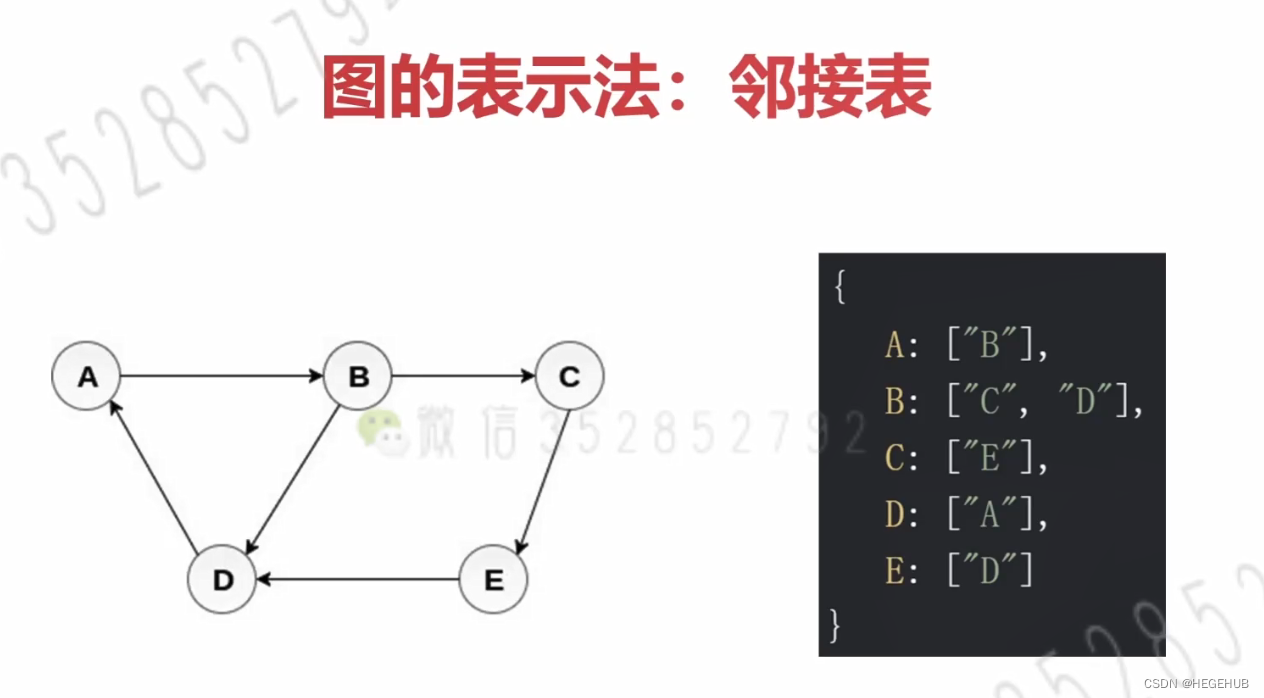
?图的邻接表表示法可以用数组,也可以用链表来表示,只要能表现出两者之间的关系就好。
8.4图的常用操作
深度优先遍历
广度优先遍历
8.5什么是图的深度/广度优先遍历
深度优先遍历算法口诀
- 访问根节点
- 对根节点的没访问过的相邻节点挨个进行深度优先遍历
广度优先遍历算法口诀
- 新建一个队列,把根节点入队
- 把队头出队并访问
- 把队头的没访问过的相邻节点入队
- 重复第二三步,直到队列为空
//图的深度遍历
const graph = {
0: [1, 2],
1: [2],
2: [0, 3],
3: [3]
}
const visited = new Set()
const dfs2 = (n) => {
console.log(n)
visited.add(n)
graph[n].forEach(c => {
if (!visited.has(c)) {
dfs2(c)
}
})
}
dfs2(2)//起始节点为2
//图的广度遍历
const visited1 = new Set()
const q = [2]
visited.add(2)
while (q.length) {
const n = q.shift()
console.log(n)
// visited.add(n)//这句话写在这有问题,有的节点在队列里面但是并没有被访问过,这样就会导致一直重复向队列添加重复元素
// 所以我们入队的时候就将认为其访问过了,可以防止队列出现重复元素,这样会导致起始节点不在visited中,我们加一下就好了
graph[n].forEach(c => {
if (!visited.has(c)) {
q.push(c)
visited.add(n)
}
})
}?下面是leetcode里的65题?
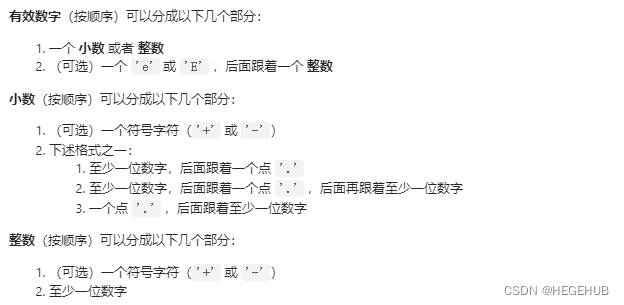
var isNumber = function (s) {
const graph = {
0: { 'blank': 0, 'sign': 1, '.': 2, 'digit': 6 },
1: { 'digit': 6, '.': 2 },
2: { 'digit': 3 },
3: { 'digit': 3, 'e': 4 },
4: { 'digit': 5, 'sign': 7 },
5: { 'digit': 5 },
6: { 'digit': 6, '.': 3, 'e': 4 },
7: { 'digit': 5 },
}
let state = 0//刚开始的状态
for (c of s.trim()) {//trim用于去掉前后的空格,降低复杂度
if (c >= '0' && c <= '9') {
c = 'digit'
} else if (c === ' ') {
c = 'blank'
} else if (c === '+' || c === '-') {
c = 'sign'
} else if (c === 'e' || c === 'E') {
c = 'e'
}
state = graph[state][c]//获取下一个状态
if (state === undefined) {
return false
}
}
if (state === 3 || state === 5 || state === 6) {
return true
}
return false
};??下面是leetcode里的133题?
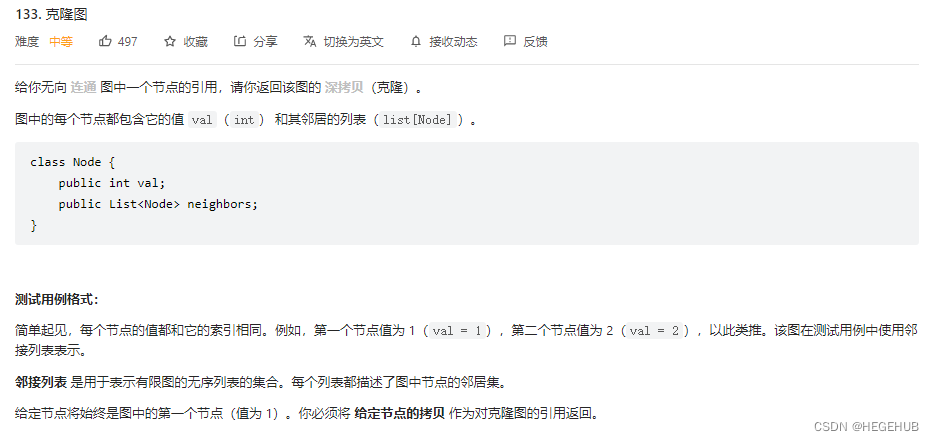
var cloneGraph = function(node) {
if(!node) return
const visited=new Map()
const dfs=(n)=>{
const nCopy=new Node(n.val)
visited.set(n,nCopy)
//防止neighbors为undefined
n.neighbors.forEach(ne=>{
if(!visited.has(ne)){
dfs(ne)
}
nCopy.neighbors.push(visited.get(ne))
})
}
dfs(node)
return visited.get(node)
};
上面这道题也可以用广度优先遍历去做
图中还有一个大西洋太平洋水流问题没有解决,待更新。
9.堆
堆是一种特殊的完全二叉树(要注意完全二叉树和满二叉树的区别)
所有的节点都大于等于(最大堆)或小于等于(最小堆)他/它的子节点。
最大堆:
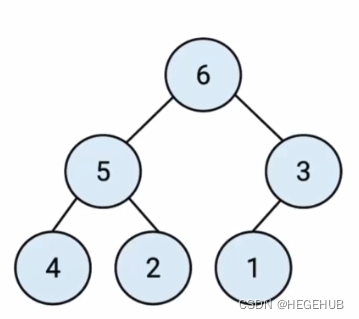
?最小堆:
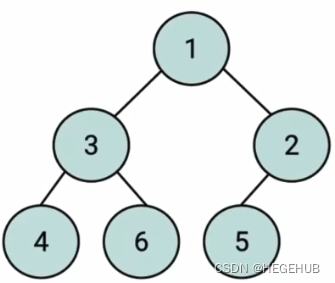
9.1js中如何用堆
在js中我们没有堆,但是可以用Array表示堆。
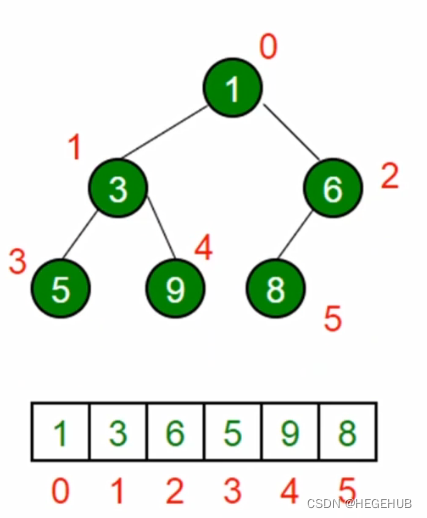
还可以通过公式来获取子节点或者父节点的位置。
左侧子节点位置:2*index+1
右侧子节点位置:2*index+2
父节点位置:(index-1)/2?
堆的应用:
- 堆能高效,快速的找出最大值(最大堆的第一个元素)和最小值(最小堆的第一个元素),事件复杂度为O(1)
- 找出第K个最大(小)元素(看到这种问题直接用堆解决)
第K个最大元素(找第K个最小元素和这个逻辑是一样的)
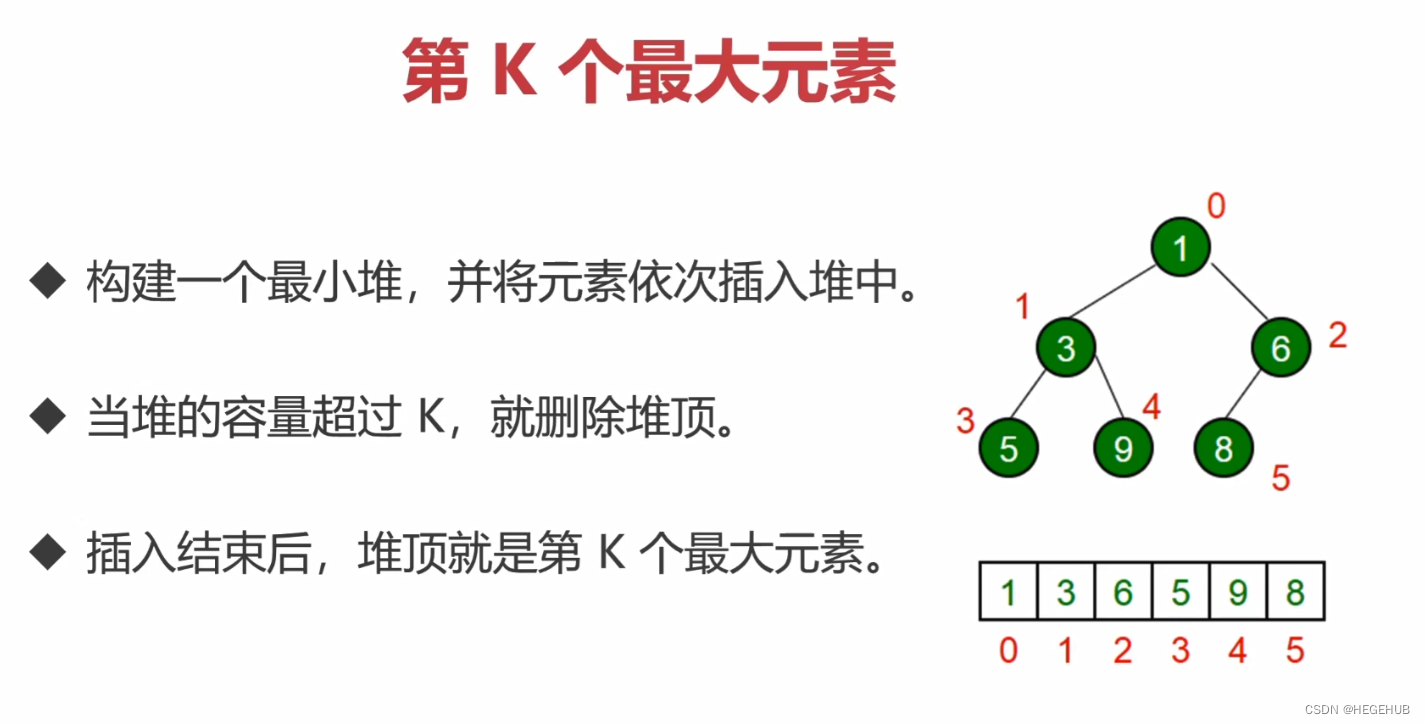
9.3用js实现一个最小堆类
最小堆:
- 在类里声明一个数组,用来装元素
- 主要方法:插入,删除堆顶,获取堆顶,获取堆大小。
插入:
- 将值插入堆的底部,即数组尾部
- 然后上移:将这个值和它的父节点进行交换,直到父节点小于等于这个插入的值
- 大小为K的堆中插入元素的时间复杂度为O(logk)
删除:
- 用数组尾部元素替换堆顶(直接删除堆顶会破坏堆结构)
- 然后下移:将新堆顶和它的子节点进行交换,知道子节点大于等于这个新堆顶。
- 大小为k的堆中删除堆顶的时间复杂度为O(logk)
返回堆顶:
- 返回对应数组下标为0的元素
返回堆大小
- 返回对应数组的长度
class MinHeap{
constructor(){
this.heap=[]
}
getLeftIndex(index){
return index*2+1
}
getRightIndex(index){
return index*2+2
}
getParentIndex(i){
// return Math.floor((i-1)/2)
return i-1>>1//二进制数右移一位,就相当于是除2
}
swap(i1,i2){
const temp=this.heap[i1]
this.heap[i1]=this.heap[i2]
this.heap[i2]=temp
}
shiftUp(index){
if(index===0) return
// 获取父节点的Index的方法
const parentIndex=this.getParentIndex(index)
if(this.heap[parentIndex]>this.heap[index]){
this.swap(parentIndex,index)
this.shiftUp(parentIndex)
}
}
shiftDown(index){
// if(index===this.heap.lenght-1) return
const leftIndex=this.getLeftIndex(index)
const rightIndex=this.getRightIndex(index)
if(this.heap[leftIndex]<this.heap[index]){
this.swap(leftIndex,index)
this.shiftDown(leftIndex)
}
if(this.heap[rightIndex]<this.heap[index]){
this.swap(rightIndex,index)
this.shiftDown(rightIndex)
}
}
inset(value){
this.heap.push(value)
//上移操作方法,数组最后一位的下标
this.shiftUp(this.heap.length-1)
}
pop(){
this.heap[0]=this.heap.pop()
this.shiftDown(0)
}
peek(){
return this.heap[0]
}
size(){
return this.heap.length
}
}
const h=new MinHeap()
h.inset(3)//将3出堆
h.inset(2)//将2出堆
h.inset(1)//将1出堆
console.log(h.peek())//1
console.log(h.size())//3
h.pop()//将1出堆
console.log(h.peek())//2
console.log(h.size())//2?下面是leetcode里的215题?

class MinHeap {
constructor() {
this.heap = []
}
getLeftIndex(index) {
return index * 2 + 1
}
getRightIndex(index) {
return index * 2 + 2
}
getParentIndex(i) {
// return Math.floor((i-1)/2)
return i - 1 >> 1//二进制数右移一位,就相当于是除2
}
swap(i1, i2) {
const temp = this.heap[i1]
this.heap[i1] = this.heap[i2]
this.heap[i2] = temp
}
shiftUp(index) {
if (index === 0) return
// 获取父节点的Index的方法
const parentIndex = this.getParentIndex(index)
if (this.heap[parentIndex] > this.heap[index]) {
this.swap(parentIndex, index)
this.shiftUp(parentIndex)
}
}
shiftDown(index) {
// if(index===this.heap.lenght-1) return
const leftIndex = this.getLeftIndex(index)
const rightIndex = this.getRightIndex(index)
if (this.heap[leftIndex] < this.heap[index]) {
this.swap(leftIndex, index)
this.shiftDown(leftIndex)
}
if (this.heap[rightIndex] < this.heap[index]) {
this.swap(rightIndex, index)
this.shiftDown(rightIndex)
}
}
insert(value) {
this.heap.push(value)
//上移操作方法,数组最后一位的下标
this.shiftUp(this.heap.length - 1)
}
pop() {
this.heap[0] = this.heap.pop()
this.shiftDown(0)
}
peek() {
return this.heap[0]
}
size() {
return this.heap.length
}
}
/**
* @param {number[]} nums
* @param {number} k
* @return {number}
*/
var findKthLargest = function (nums, k) {
const h = new MinHeap()
nums.forEach(n => {
h.insert(n)
if (h.size() > k) {
h.pop()
}
})
return h.peek()
};?下面是leetcode里的347题?

class MinHeap{
constructor(){
this.heap=[]
}
getLeftIndex(index){
return index*2+1
}
getRightIndex(index){
return index*2+2
}
getParentIndex(i){
// return Math.floor((i-1)/2)
return i-1>>1//二进制数右移一位,就相当于是除2
}
swap(i1,i2){
const temp=this.heap[i1]
this.heap[i1]=this.heap[i2]
this.heap[i2]=temp
}
shiftUp(index){
if(index===0) return
// 获取父节点的Index的方法
const parentIndex=this.getParentIndex(index)
if(this.heap[parentIndex]&&this.heap[parentIndex].value>this.heap[index].value){
this.swap(parentIndex,index)
this.shiftUp(parentIndex)
}
}
shiftDown(index){
// if(index===this.heap.lenght-1) return
const leftIndex=this.getLeftIndex(index)
const rightIndex=this.getRightIndex(index)
if(this.heap[leftIndex]&&this.heap[leftIndex].value<this.heap[index].value){
this.swap(leftIndex,index)
this.shiftDown(leftIndex)
}
if(this.heap[rightIndex]&&this.heap[rightIndex].value<this.heap[index].value){
this.swap(rightIndex,index)
this.shiftDown(rightIndex)
}
}
insert(value){
this.heap.push(value)
//上移操作方法,数组最后一位的下标
this.shiftUp(this.heap.length-1)
}
pop(){
this.heap[0]=this.heap.pop()
this.shiftDown(0)
}
peek(){
return this.heap[0]
}
size(){
return this.heap.length
}
}
/**
* @param {number[]} nums
* @param {number} k
* @return {number[]}
*/
var topKFrequent = function(nums, k) {
const map=new Map()
nums.forEach(c=>{
if(!map.has(c)){
map.set(c,1)
}else{
map.set(c,map.get(c)+1)
}
})
const h=new MinHeap()
map.forEach((value,key)=>{
h.insert({value,key})
if(h.size()>k){
h.pop()
}
})
return h.heap.map(a=>a.key)
};?下面是leetcode里的23题?
对数组排序的时间复杂度最小为O(nlogn),但是我们没必要对整个数组进行排序,我们只需要找到最小值就好了,所以这个时候我们没有必要用数组,我们就可以用最小堆来(时间复杂度logk)实现。
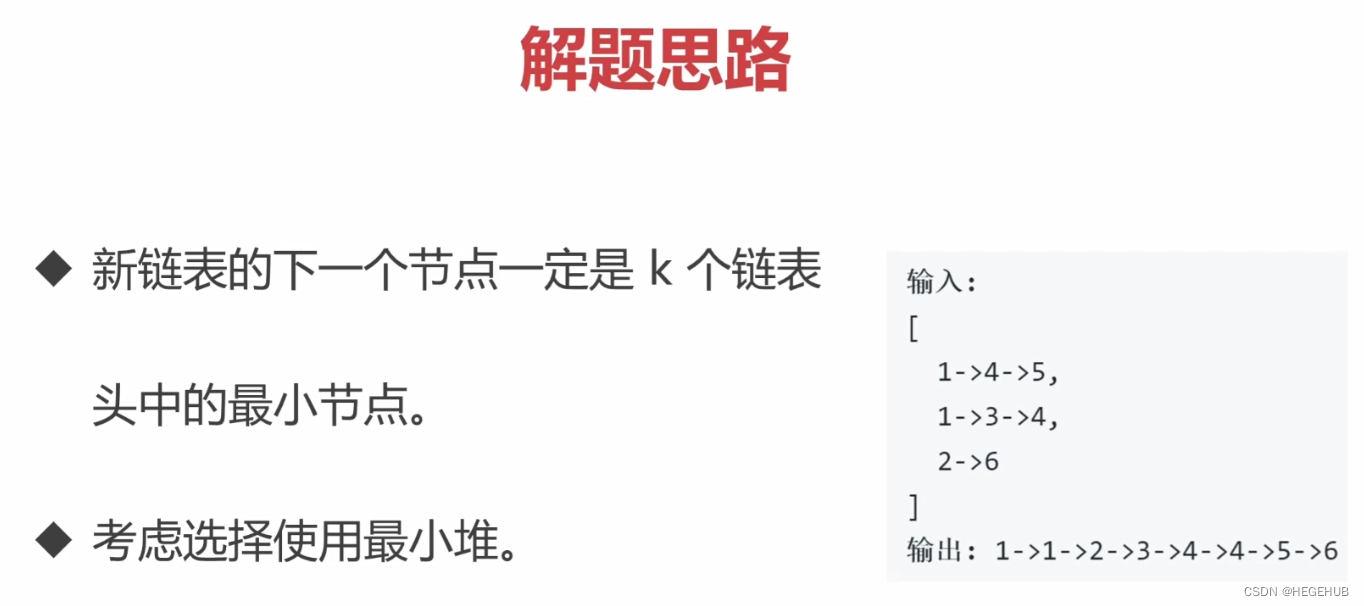
?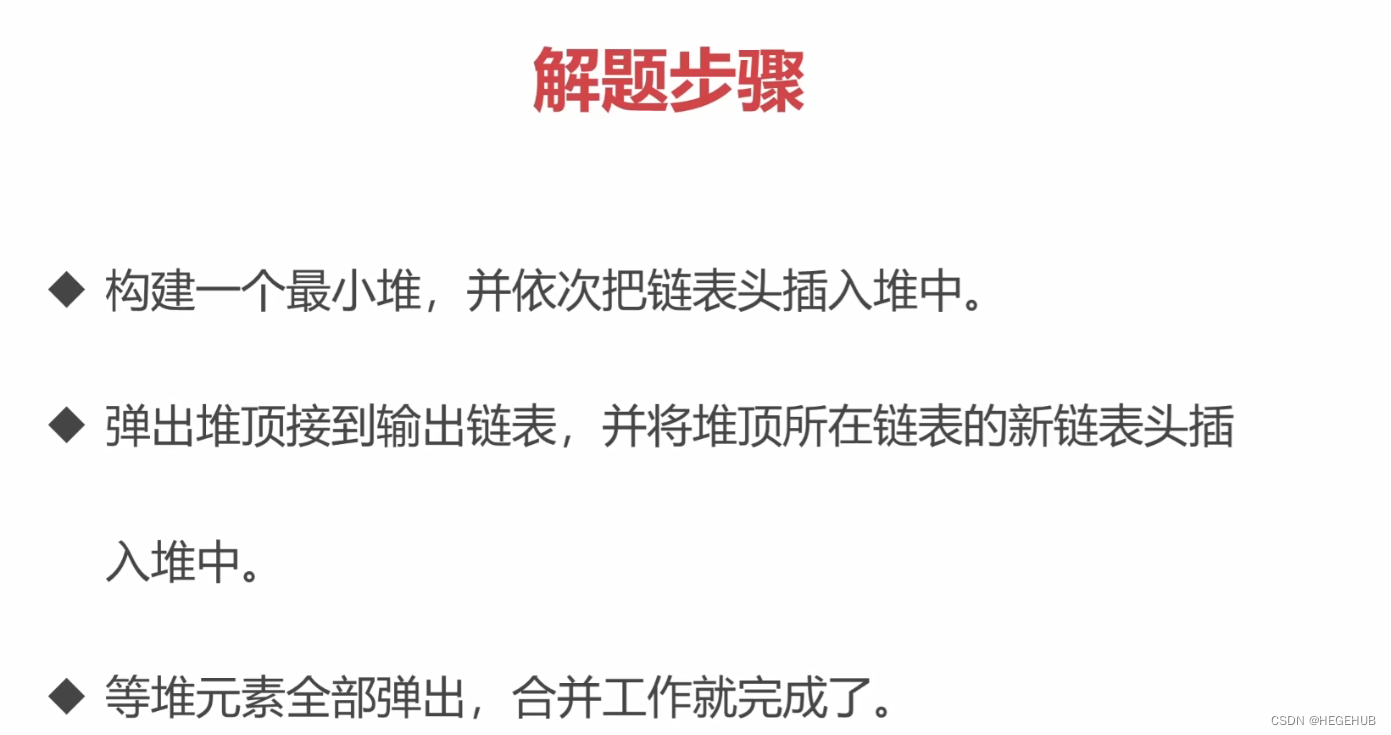
class MinHeap{
constructor(){
this.heap=[]
}
getLeftIndex(index){
return index*2+1
}
getRightIndex(index){
return index*2+2
}
getParentIndex(i){
// return Math.floor((i-1)/2)
return i-1>>1//二进制数右移一位,就相当于是除2
}
swap(i1,i2){
const temp=this.heap[i1]
this.heap[i1]=this.heap[i2]
this.heap[i2]=temp
}
shiftUp(index){
if(index===0) return
// 获取父节点的Index的方法
const parentIndex=this.getParentIndex(index)
if(this.heap[parentIndex]&&this.heap[parentIndex].val>this.heap[index].val){
this.swap(parentIndex,index)
this.shiftUp(parentIndex)
}
}
shiftDown(index){
// if(index===this.heap.lenght-1) return
const leftIndex=this.getLeftIndex(index)
const rightIndex=this.getRightIndex(index)
if(this.heap[leftIndex]&&this.heap[leftIndex].val<this.heap[index].val){
this.swap(leftIndex,index)
this.shiftDown(leftIndex)
}
if(this.heap[rightIndex]&&this.heap[rightIndex].val<this.heap[index].val){
this.swap(rightIndex,index)
this.shiftDown(rightIndex)
}
}
insert(value){
this.heap.push(value)
//上移操作方法,数组最后一位的下标
this.shiftUp(this.heap.length-1)
}
pop(){
if(this.size()===1) return this.heap.shift()
const top=this.heap[0]
this.heap[0]=this.heap.pop()
this.shiftDown(0)
return top
}
peek(){
return this.heap[0]
}
size(){
return this.heap.length
}
}
/**
* Definition for singly-linked list.
* function ListNode(val, next) {
* this.val = (val===undefined ? 0 : val)
* this.next = (next===undefined ? null : next)
* }
*/
/**
* @param {ListNode[]} lists
* @return {ListNode}
*/
var mergeKLists = function(lists) {
const res=new ListNode(0)
let p=res
const h=new MinHeap()
lists.forEach(l=>{
if(l) h.insert(l)
})
while(h.size()){
const n=h.pop()
p.next=n
p=p.next
if(n.next) h.insert(n.next)
}
return res.next
};10.排序和搜索
排序:把某个乱序的数组变成升序或者降序的数组
搜索:找出数组中某个元素的下标
10.1js中的排序和搜索
- js中的排序:数组的sort方法等。
- js中的搜索:数组的indexOf方法等。
为什么有了现成的API我们还要学习排序和搜索呢,因为我们程序员不仅要知其然还要知其所以然,了解其原理,丛0开始学习排序和搜索。
10.2常用的搜索和排序算法
- 排序算法:冒泡排序,归并排序,选择排序,插入排序,快速排序等等
- 搜索算法:顺序搜索,二分搜索等等
10.3js实现冒泡排序
- 比较所有相邻元素,如果第一个比第二个大,则交换它们。
- 一轮下来,可以保证最后一个数是最大的。
- 执行n-1轮,就可以完成排序。(最后一个数不用排了)
Array.prototype.bubbleSort=function(){
for(let i=0;i<this.length-1;i++){
for(let j=0;j<this.length-1-i;j++){
if(this[j]>this[j+1]){
let temp=this[j]
this[j]=this[j+1]
this[j+1]=temp
}
}
}
}10.4js实现选择排序
- 找到数组中的最小值,选中它并将其放置在第一位
- 接着找到第二小的值,选中它并将其放置在第二位
- 以此类推执行n-1轮
Array.prototype.selectionSort = function () {
for (let i = 0; i < this.length - 1; i++) {
let min=i//默认刚开始的值时最小的
for (let j = i; j < this.length ; j++) {
if (this[min] > this[j]) {
min = j
}
}
if (i !== min) {
let temp = this[i]
this[i]=this[min]
this[min]=temp
}
}
}10.5js实现插入排序
- 从第二个数开始往前比
- 比它大就往后排
- 以此类推进行到最后一个数
Array.prototype.insertionSort = function () {
for (let i = 1; i < this.length; i++) {
let currentValue=this[i]
let j=i
for (j; j >0;j--) {
if (currentValue < this[j-1]) {
this[j]=this[j-1]
}else {
break
}
}
this[j]=currentValue
}
}10.6js实现归并排序
火狐浏览器里面的sort算法就是用的归并排序来实现的
- 分:把数组劈成两半,再递归地对子数组进行分操作,直到分成一个一个单独的数的数组
- 合:把两个数合并为有序数组,再对有序数组进行合并,直到全部子数组合并为一个完整数组
如何合并两个有序数组
- 新建一个空数组res,用于存放最终排序后的数组
- 比较两个有序数组的头部,较小者出队并推入res中
- 如果两个数组还有值,就重复第二步
Array.prototype.mergeSort = function () {
const rec=(arr)=>{
if (arr.length===1) return arr
const mid=Math.floor(arr.length/2)
const left=arr.slice(0,mid)
const right=arr.slice(mid,arr.length)
const orderLeft=rec(left)
const orderRight=rec(right)
const res=[]
while(orderLeft.length||orderRight.length){
if(orderLeft.length&&orderRight.length){
res.push(orderLeft[0]<orderRight?orderLeft.shift():orderRight.shift())
}else if(orderRight.length){
res.push(orderRight.shift())
}else if(orderLeft.length){
res.push(orderLeft.shift())
}
}
return res
}
const res=rec(this)
console.log(res)
res.forEach((n,i)=>{this[i]=n})
}10.7js实现快速排序
Chrome浏览器里面的sort就是用的快速排序来实现的
- 分区:从数组中任意选择一个基准,所有比基准小的元素放在基准前面,比基准大的放在基准后面
- 递归:递归地对基准前后的子数组进行分区
Array.prototype.quickSort = function () {
const rec=(arr)=>{
if(arr.length<=1) return arr
const left=[]
const right=[]
const mid=arr[0]
for(let i=1;i<arr.length;i++){
if(arr[i]<mid){
left.push(arr[i])
}else{
right.push(arr[i])
}
}
return [...rec(left),mid,...rec(right)]
}
const res=rec(this)
res.forEach((n,i)=>{this[i]=n})
}10.8js实现顺序搜索
- 遍历数组
- 找到跟目标值相等的元素,就返回它的下标
- 遍历结束后,如果没有搜索到目标值,就返回-1
Array.prototype.sequentialSearch = function (num) {
for(let i=0;i<this.length;i++){
if(this[i]===num){
return i
}
}
return -1
}10.9js实现二分搜索(折半搜索)
针对于有序数组
- 从数组的中间元素开始,如果中间元素正好是目标值,则搜索结束
- 如果目标值大于或者小于中间元素,则在大于或者小于中间元素的那一半数组中搜索
Array.prototype.binarySearch = function (num) {
let low=0
let high=this.length-1
while(low<=high){
const mid =Math.floor((low+high)/2)
const element=this[mid]
if(element<num){
low=mid+1
}else if(element>num){
high=mid-1
}else{
return mid
}
}
return -1
}下面是leetcode里的21题?
 ?
?
var mergeTwoLists = function (list1, list2) {
const res = new ListNode(0)
let h3 = res
let h1 = list1
let h2 = list2
while (h1 && h2) {
if (h1.val <= h2.val) {
h3.next = h1
h1 = h1.next
} else {
h3.next = h2
h2 = h2.next
}
h3 = h3.next
}
if (h1) {
h3.next = h1
}
if (h2) {
h3.next = h2
}
return res.next
};下面是leetcode里的374题?
 ?
?
var guessNumber = function(n) {
let low=1
let high=n
while(low<=high){
const mid=Math.floor((low+high)/2)
const res=guess(mid)
if(res===0){
return mid
}else if(res===1){
low=mid+1
}else{
high=mid-1
}
}
};非常感谢您的阅读,欢迎大家提出您的意见,指出相关错误,谢谢!越努力,越幸运!
